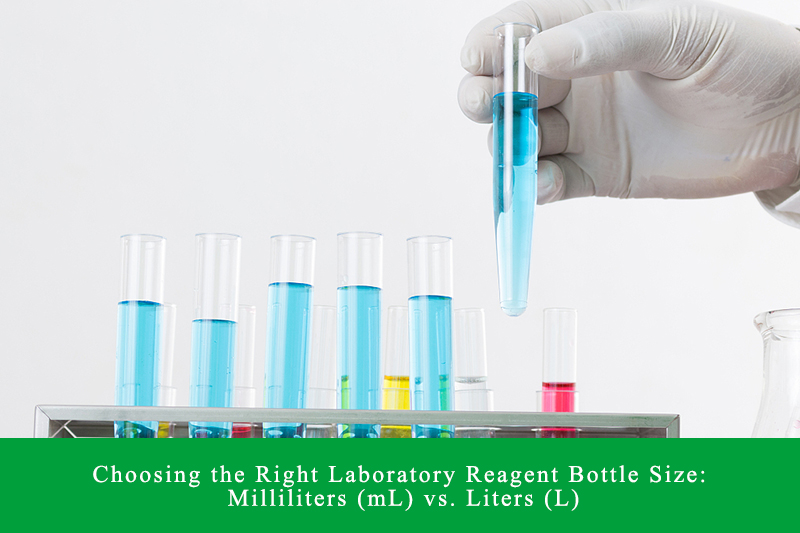Introduction
In laboratory settings, reagents are essential substances used in chemical reactions, analyses, and various experimental procedures. These reagents come in different forms, and their storage and handling play a crucial role in maintaining their integrity and effectiveness. To cater to diverse experimental needs, Reagent Bottles Lab are available in various capacities, typically measured in milliliters (mL) and liters (L). This article aims to explore the significance of choosing the appropriate reagent bottle size based on the specific requirements of the experiments.
Understanding the Metrics: Milliliters (mL) and Liters (L)
Before delving into the selection process, it is important to grasp the significance of the measurement units used for reagent bottles. Milliliters (mL) and liters (L) are both units of volume, with one liter equal to 1000 milliliters. While milliliters are more suitable for small quantities, liters are used to measure larger volumes. The choice between the two depends on the experimental scale and the usage frequency of the reagent.
Selecting the Right Bottle Size
Experimental Scale:
The primary consideration when choosing a reagent bottle size is the scale of the experiment. For small-scale experiments, such as titrations or dilutions, reagent bottles with capacities ranging from 10 mL to 100 mL are typically sufficient. These smaller volumes help minimize wastage, especially when dealing with expensive or rare reagents.
Conversely, large-scale experiments, like bulk synthesis or industrial applications, require reagents in larger quantities. In such cases, Reagent Media Bottle with capacities of 500 mL, 1 L, or even more become necessary to meet the demand.
Reagent Usage Frequency:
The frequency of reagent usage also plays a role in determining the appropriate bottle size. For frequently used reagents, it is practical to store them in larger containers to reduce the need for frequent replenishment and to ensure a steady supply during experiments. This approach can save time and minimize the risk of running out of essential reagents midway through an experiment.
On the other hand, reagents used infrequently or in limited quantities are best stored in smaller bottles. This approach ensures the preservation of the reagent’s quality and prevents degradation over extended periods.
Chemical Stability:
Certain reagents are sensitive to light, air, or other environmental factors, which can lead to their degradation. When dealing with such reagents, choosing a bottle size that minimizes headspace is crucial to reduce the reagent’s exposure to air, moisture, or light. In such cases, smaller reagent bottles are preferable, as they help maintain the reagent’s stability and integrity.
Safety and Handling:
The safety of laboratory personnel is paramount. When working with hazardous or corrosive reagents, it is essential to consider the ease of handling and the risk of spillage. Large bottles can be challenging to manage, especially when transferring the reagent to smaller containers. Hence, it is advisable to opt for smaller reagent bottles to improve safety and minimize the likelihood of accidents.
Conclusion
Selecting the appropriate reagent bottle size is a critical decision that directly impacts the efficiency and safety of laboratory experiments. By considering factors such as experimental scale, reagent usage frequency, chemical stability, and safety concerns, researchers can make informed choices when choosing between milliliter and liter capacities. Striking the right balance ensures the optimal use of reagents, minimizes waste, and maximizes the overall success of scientific endeavors.
Post time: Jul-20-2023





